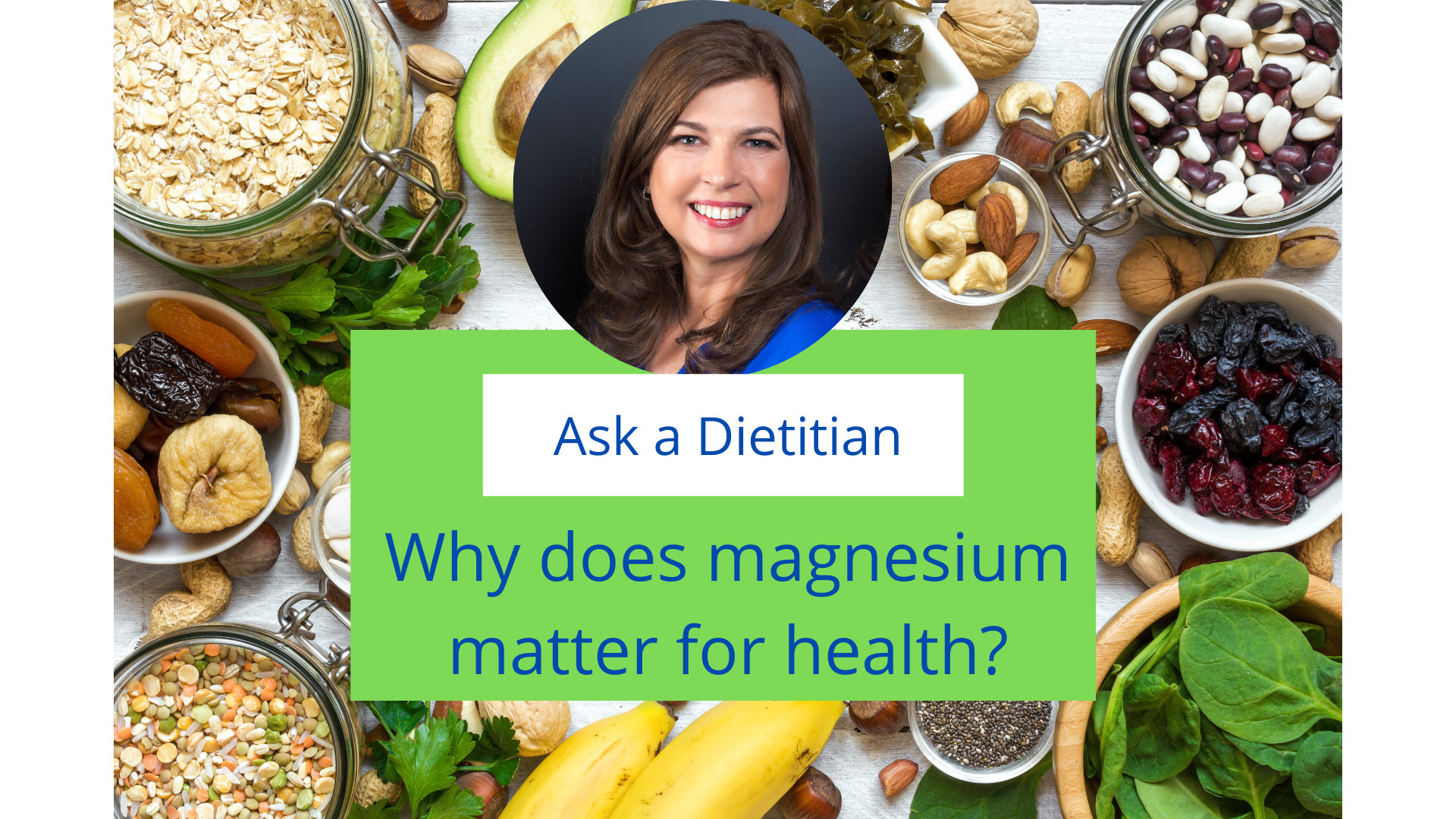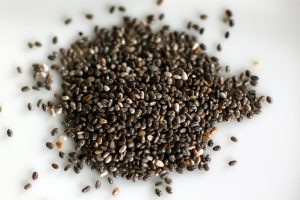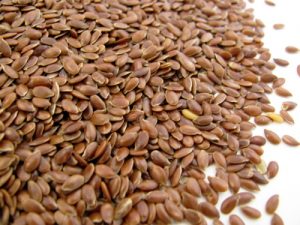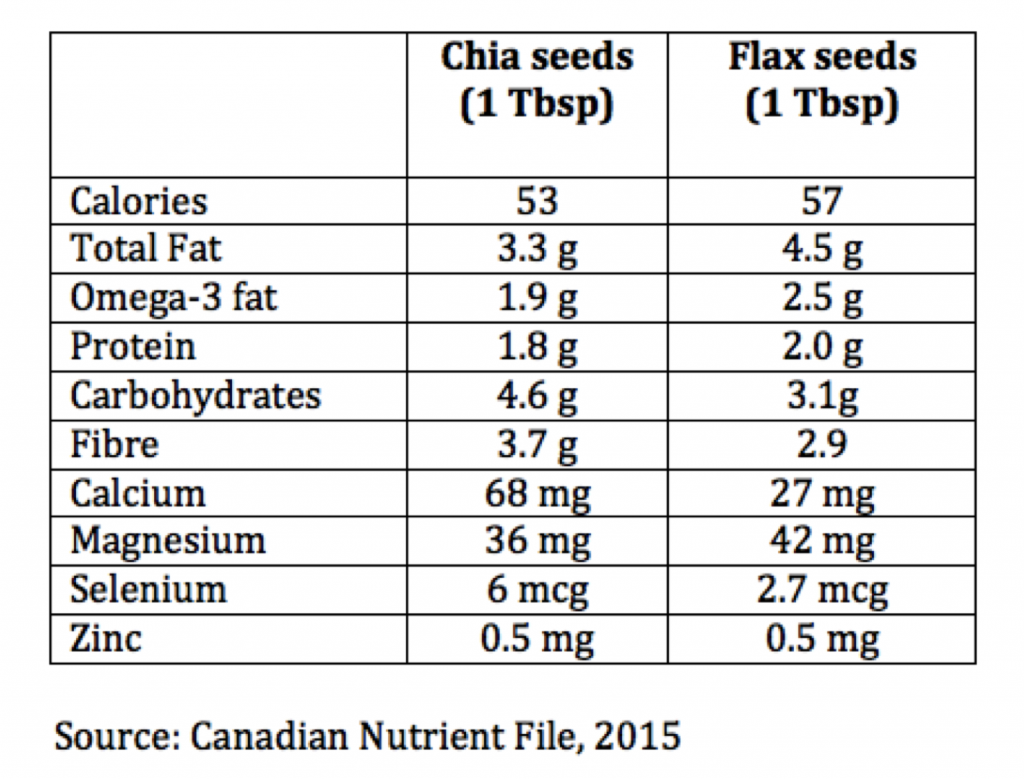 Image Source: Bigstock, Canva
Image Source: Bigstock, Canva
Magnesium is a hot topic and clients are asking what does it do?
Magnesium is an important mineral in the body. It plays a role in over 300 body enzyme reactions. Its many functions include producing energy, making body protein, and building bones and teeth. Magnesium also supports muscle and nerve function by helping our muscles relax and contract. Magnesium has a role in regulating blood pressure, blood sugar levels and may help protect against heart disease. Magnesium helps maintain a healthy immune response.
Magnesium is becoming a hot topic lately because research shows that many people are not getting enough magnesium in their diet. More than 34% of Canadians over the age of 19 consume less magnesium that would meet their nutrient requirement. [1] Although a true deficiency is rare in healthy people, because the body can compensate for lower magnesium intakes by reducing its loss in the urine and taking magnesium from deposits stored in your bones. If you don’t consume enough magnesium, a concern is that you may not have enough of this important mineral stored to keep yourself healthy and protect your body against heart disease and immune disorders. [2]
How much magnesium do you need?[3]
Adult men need 400-420 milligrams daily and adult women need 310-320 milligrams magnesium every day.
Supplements provide non-food sources of magnesium. The tolerable upper intake level for non-food sources of magnesium is 350 milligrams / day. This amount would be in addition to the magnesium provided by food. Consult with your doctor or dietitian if you have any questions about non-food sources of magnesium in your diet. This is especially important because magnesium supplements can interact with some medications, so do discuss supplements with a health care provider before taking one.
Where is magnesium found in food? [4]
Magnesium is found in many foods.
The best sources of magnesium are nuts and seeds. Here are some examples:
- Pumpkin seeds, ¼ cup (60 mL) of has 317 mg magnesium (about 10 medium nuts) [5]
- Brazil nuts ¼ cup (60 mL) has 133 mg magnesium
- Nuts (almonds, pine nuts, cashews, mixed nuts etc.) ¼ cup (60 mL) have 79-98 mg magnesium
- Soybeans (edamame) frozen or prepared ¾ cup (175mL) has 73 mg magnesium
Other magnesium-rich foods are dark green leafy veggies including spinach and Swiss chard with
½ cup (125 mL) cooked dark greens delivering about 80 mg magnesium.
Magnesium is also found in legumes (dried beans, peas, lentils), grain foods like fortified breakfast cereals, bread, rice; soy foods like soymilk and tofu; peanut butter, avocados, potatoes, dairy yogurt and milk.
Bottom line
About one third of Canadians consume less than the average requirement for magnesium. Be sure to include plenty of magnesium rich foods in your diet. Inadequate nutrient intake can lead to nutrient deficiencies that may negatively affect the quality of your life.
Do you have a food or nutrition question? Ask us and we’ll feature it in our Ask a Dietitian posts. Registered Dietitians are the most trusted food and nutrition experts who are committed to helping Canadians enjoy nutritious, sustainable, and affordable and healthy eating.
Written by Lucia Weiler, BSc, RD, PHEc, Award-winning dietitian and Co-Founder, n4nn
[1] Health Canada (2012) Do Canadian Adults Meet Their Nutrient Requirements Through Food Intake Alone? Available at
art-nutr-adult-eng.pdf (canada.ca)
[2] Duyff Academy of Food and Nutrition (2017) Complete Food & Nutrition Guide
[3] Dietitians of Canada-UnlockFood.ca (2019) What You Need to Know About Magnesium Available at What You Need to Know About Magnesium – Unlock Food
[4] Alberta Health Services (2019) Magnesium and Your Diet. Available at Magnesium and Your Diet (albertahealthservices.ca)
[5] Government of Canada, Health Canada, Canadian Nutrient File https://food-nutrition.canada.ca/cnf-fce/serving-portion.do?id=2544




